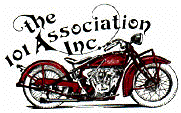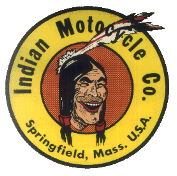I am not saying it is impossible and undoable to restore a rusted tank so that it is unsafe to use, not at all, but I want to point out the difficulties and pitfalls that I have found it can be. I have successfully repaired and restored old tanks both welded and soldered. I have restored them both by welding in new metal or patched holes with solder. But I have failed also and that is a bit dangerous with an incendiary bomb between your legs. I feel sorry every time I see a bike engulfed in flames.
The thing is with rust that rust thins out fresh metal and rust make pores in the metal. That induce all sorts of problem for the restorer whatever good or bad he is. Thinner metal makes the tank weaker and pores are very hard to get into deep enough to clean in order to repair.
Any grinding or sanding makes the material thinner, well there is a safety margin for the material strength you think, but it is on rusted areas that you grind that already is thinner. Solder in itself adds next to nothing to the integral strength of the tank. It is just like glue. Only strong when gluing parts together. The strength of a soldered joint depends very much on that the parts are fitted as tight and close together as possible. There is an exception, at the edges of an assembly especially the oil tank seam, and at the edges of the reinforcement plates and bolt fittings, there it needs to be a generous fillet radius in order to prevent cracks to start.
I file, grind and sand out the pores you think, but that is a truth with modification. There is thousands of pores of different depths and it is not certain you get in deep enough to eliminate all of them. Sandblasting with abrasive media has a nasty tendency to peen over the pesky miniature pores that you want to eliminate. Acid needs to be neutralized good or it'll bite you in the ass. Electrolytic rust removal is the better of the poor ways to get rid of rust.
The solder cover all of the rusted but cleaned out and shining area you think, well that's also a truth with a twist, All newly soldered area is smooth, gleaming and shining but the fact is that the acid that you etched the rusted area with or the flux you used to solder, did not get entirely down all of the microscopic pores that remains in the metal so the solder is only bridging over those!
In the microscopic small covered pores there can be remains of both rust and flux and the solder is thinner there or has microscopic holes in it. If the fresh soldered tank tank is left untreated in the open air on a shelf for some years, you can find, as I have done, that rust has emerged from those tiny remaining holes or the rust pores has proceeded through the sheet metal!
Rust needs oxygen to live and that is present in the flux, in the air, or in the watery gas in the tank, and it is getting to the metal through paint damage or in any way it can. It never sleeps.
So you think, I just cover the inside with a tank lining. That's good BUT. It's just another layer that can induce all sorts of problems down the line, problem with drying or hardening, problem to get a uniform thickness, dissolving or softening in foul gas, crack, blistering, flaking, granulating, releasing colour. It also hide underlying rust until the blister breaks up. And not the least, utter pain in the ass trying to remove a failing lining! And the goober does absolutely nothing to the integral strength of the tank.
Now to reproduced tanks.
New sheet metal is better than rusted sheet metal. Well, that depends in part on the sheet metal thickness. Sorry to say I don't know the metal thickness of the new tanks. I got one repro tank, but I haven't yet disassembled that. Add to that I can't tell with certainty who has made it. And it was many years ago that I bought it so I can't say anything about recently reproduced tanks.
A original 101 tank consists of (I think it was 24-26) parts that is soldered together depending on if it is the -28 tank with the through the tank stopper, or later. It goes without saying that that is very elaborate and expensive to manufacture and assemble. So it is tempting for any fabricator to skimp on details and reduce the amount of parts in order to be able to sell it for a price that at least a few are willing to pay for it.
The problem with that is that the integral strength of the tank is compromised, especially if the outer skin possible is thinner than original.
And I found that is the case with the reproduced tank that I have. Again, I can't say anything about recently reproduced tanks.
There is no slosh baffles, it should be 2. That's bad because they distribute the forces to the top of the tank, makes the bottom much more stiff. And what's worse, there is no plates to reinforce the bottom of the tank. Original there is 4 large thick plates soldered at the bottom to distribute the jolting, pounding, vibrating weight of some 14 liters of sloshing fluid. And a smaller plate for the gas line petcock at the rear. So all the lines and bolt fittings are soldered plainly to the skin. There is no stiffener beads either on the oil tank side as it is original.
My purchase is not a total loss anyhow. The outside tank shape, measures and fit is excellent so it is really useful for changing skin on one of the rusted out originals that I have. I am going to just use all original details from the old tank and transfer them to the new skin! The new tank filler necks, threads for lines and bolts is just as original so maybe I use some of the new details.


